-51.5%
Energy-based carbon emissions reduction since 2008
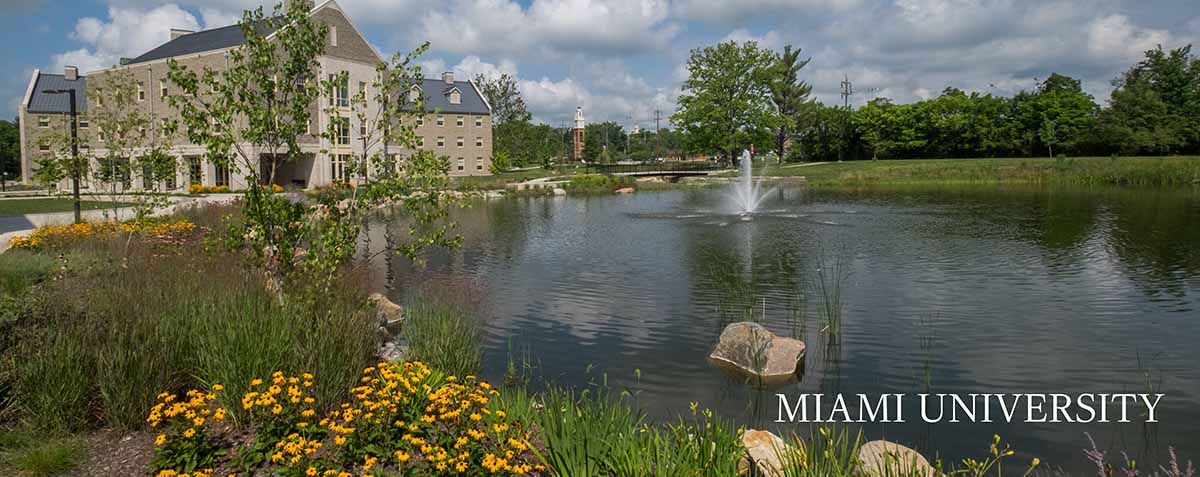
The Miami 2040 Climate Action Plan was submitted in May 2024. As a living document, it will be updated with progress toward goals in real time.
As a signatory of Second Nature’s Climate Commitment (September 2020), our Climate Action Plan outlines the goals, targets, and actions that will lead Miami’s Oxford campus to carbon neutrality for energy-based emissions — Scopes 1 and 2 — and emissions from commuting and university-financed air travel — Scope 3.

The Fifth National Climate Assessment, published in November 2023, states that the effects of human-caused climate change are already far-reaching and worsening across every region of the United States (Jay et al., 2023).
As part of the Campus-Community Climate Resilience Assessment for Miami University (submitted to Second Nature in August 2023), a study on the historical and predicted effects of climate change in southwest Ohio found that in the Midwest, future projected changes in average annual temperature are projected to be higher than in any other region of the United States.
The study, by Jonathan Levy, director of the Institute for the Environment and Sustainability, and Jason Rech, professor of Geology and Environmental Earth Science, predicts that southwest Ohio will experience lower precipitation and increased temperatures in summer and increased precipitation and increased maximum temperatures in fall, winter, and spring.
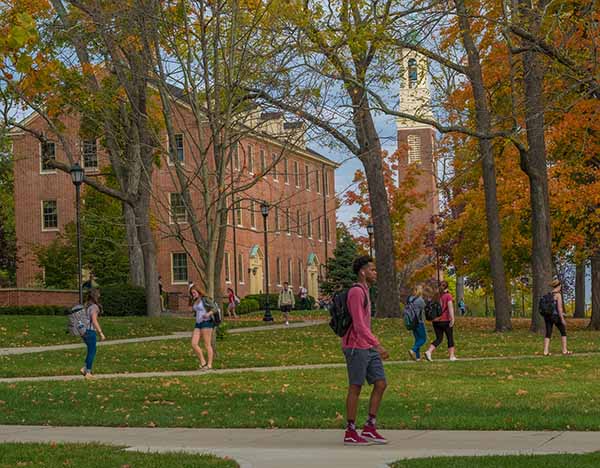
At the national scale, the benefits of deep emissions cuts for current and future generations are expected to far outweigh the costs, according to the National Climate Assessment.
At Miami, not only have we succeeded in reducing energy use by nearly half, and reducing energy-based carbon emissions by more than half since 2008, we have realized an estimated cost savings of more than $100 million during that period.
Miami University’s path to carbon neutrality began in 2010 when our historic residence halls — Elliott (pictured at right) and Stoddard, circa 1829 and 1836 — were converted off steam to geothermal heating and cooling.
Since then, with the implementation of Miami’s Utility Master Plan, most campus buildings have transitioned from the legacy district steam system to simultaneous heating and cooling, low-temperature Heating Hot Water, and geothermal exchange for heating and cooling.
The Utility Master Plan has led to sustainable reductions in energy use and energy-based carbon emissions since 2008, achieving by fiscal year 2023:
-51.5%
Energy-based carbon emissions reduction since 2008
-62.5%
Energy-based carbon emissions reduction per building gross square foot since 2008
-47.3%
Reduction in energy use intensity, kBtu per gross square foot
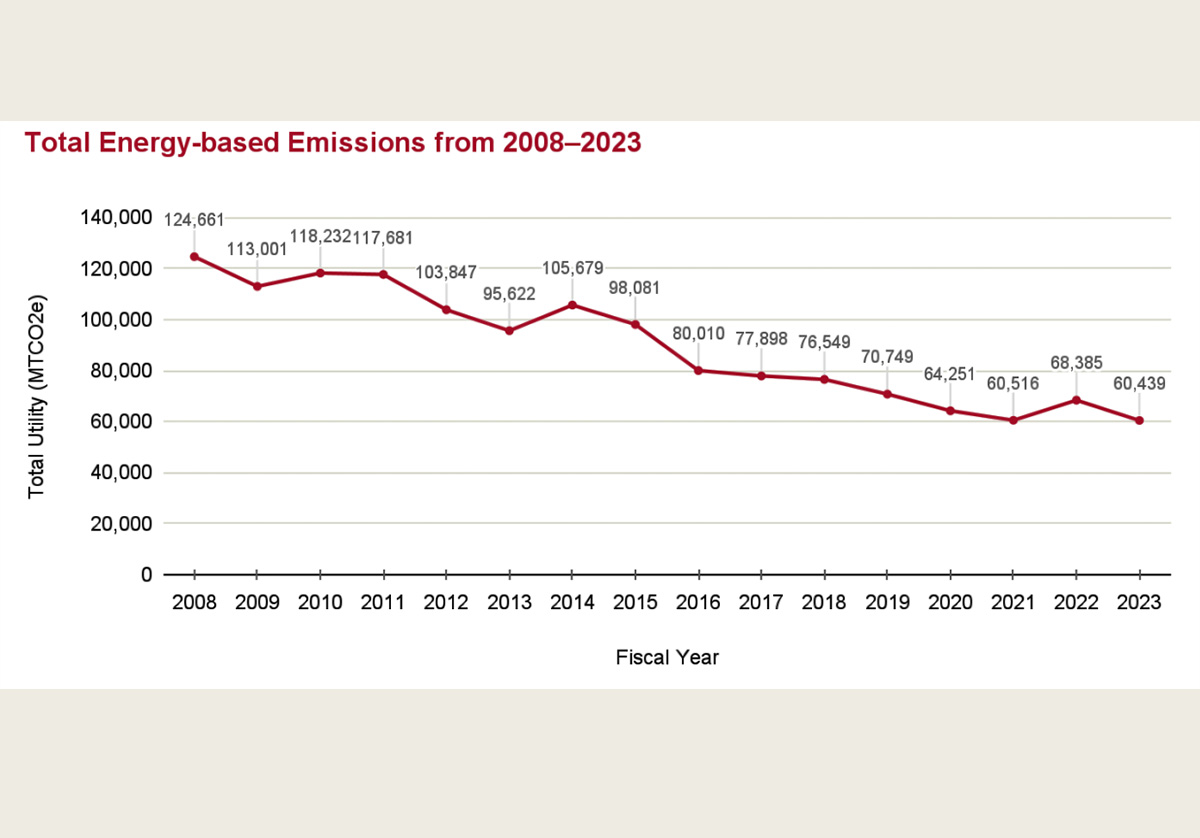
Figure 1: Total energy-based emissions, MTCO2e (metric tons of CO2 equivalent) from 2008–2023; Oxford campus (expand the table below for data).
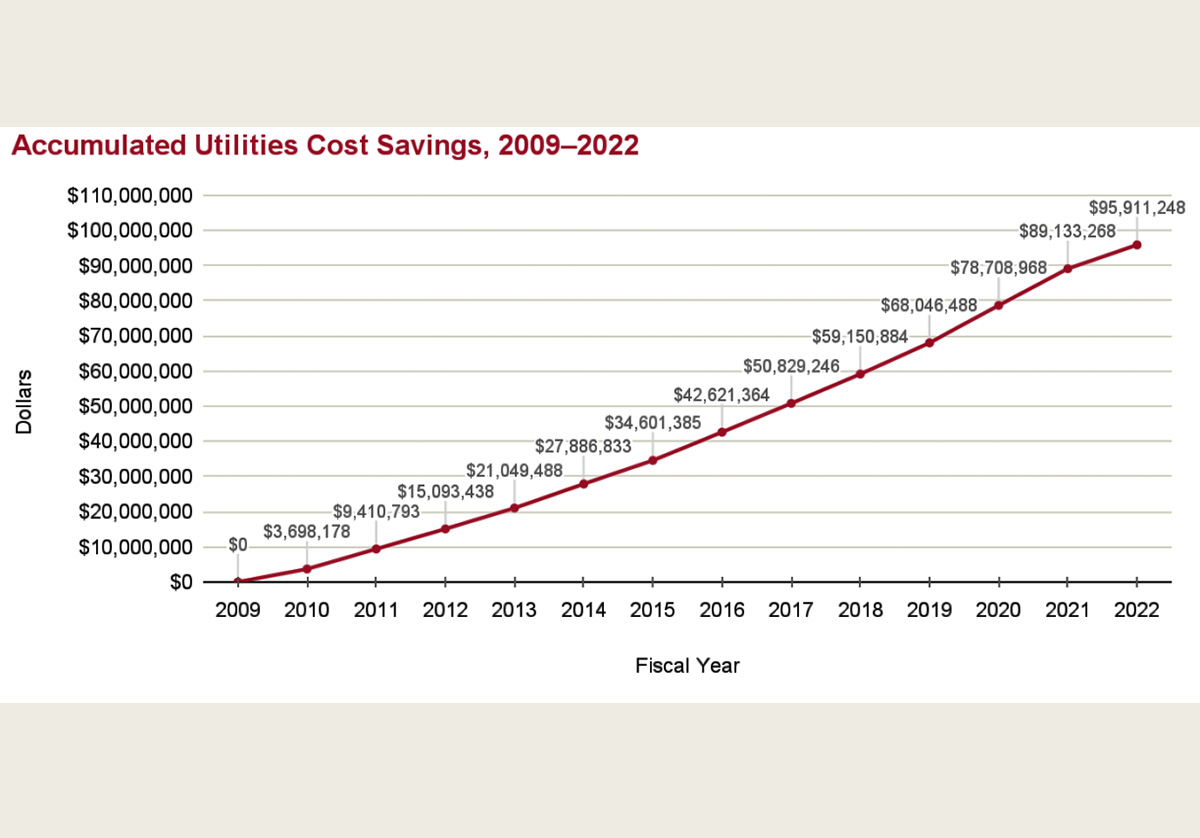
| Fiscal Year | Total Utility (MTCO2e) | % Carbon Reduction/GSF | KBTU/GSF | % Carbon Reduction Total |
|---|---|---|---|---|
| 2008 | 124,660.84 | 0% | 165.8 | 0% |
| 2009 | 113,000.64 | -9% | 168.5 | -9% |
| 2010 | 118,232.36 | -15% | 139.7 | -5% |
| 2011 | 117,680.57 | -16% | 140 | -6% |
| 2012 | 103,847.08 | -26% | 130.9 | -17% |
| 2013 | 95,621.99 | -32% | 131.2 | -23% |
| 2014 | 105,678.51 | -28% | 129.3 | -15% |
| 2015 | 98,080.77 | -32% | 123.7 | -21% |
| 2016 | 80,010.43 | -46% | 111.5 | -36% |
| 2017 | 77,897.99 | -48% | 105.3 | -38% |
| 2018 | 76,548.83 | -50% | 105.3 | -38% |
| 2019 | 70,748.75 | -54% | 100.9 | -43% |
| 2020 | 64,251.45 | -59% | 87.87 | -48% |
| 2021 | 60,515.82 | -62% | 83.93 | -51% |
| 2022 | 68,385.10 | -57% | 93.93 | -45% |
| 2023 | 60,439 | -62.5% | 87.3 | -51.5% |
| Fiscal Year | Dollars |
|---|---|
| 2009 | $0 |
| 2010 | $3,398,178 |
| 2011 | $9,410,793 |
| 2012 | $15,093,438 |
| 2013 | $21,049,488 |
| 2014 | $27,886,833 |
| 2015 | $34,601,385 |
| 2016 | $42,621,364 |
| 2017 | $50,829,246 |
| 2018 | $59,150,884 |
| 2019 | $68,046,488 |
| 2020 | $78,708,968 |
| 2021 | $89,133,268 |
| 2022 | $95,911,248 |
To confront a challenge unlike any faced by previous generations, “the best possible future will emerge only if the nation works collectively,” according to National Climate Assessment authors. Miami agrees. In fact, Miami is working with the higher education community to share knowledge and best practices for energy systems transitions.
Submitted May 2024
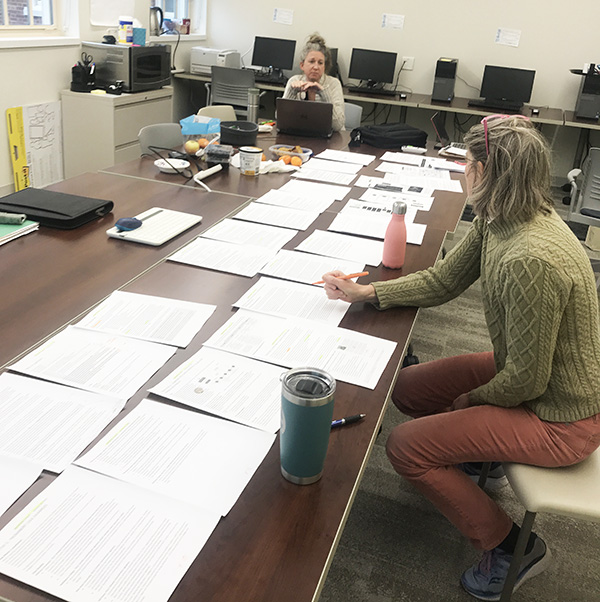 The Miami University Sustainability Committee, created in 2010 with the appointment of Miami’s first sustainability coordinator, drafted the first set of Sustainability Commitments and Goals (SCAG).
The Miami University Sustainability Committee, created in 2010 with the appointment of Miami’s first sustainability coordinator, drafted the first set of Sustainability Commitments and Goals (SCAG).
Updated in 2016 and led by Miami’s first full-time sustainability director, the SCAG helped guide actions leading toward Miami’s AASHE Gold STARS ratings by (2019, 2022) and our 32 LEED (Leadership in Energy and Environmental Design) Silver and Gold-Certified buildings, which account for more than 30% of building square footage on the Oxford campus.
In 2019, Miami University President Gregory Crawford charged the Sustainability Committee to prepare a new plan for sustainability that would leverage our successes to date and set forth new aspirations. The report “A Commitment to Lead” (June 2019) led to a new charge to further examine carbon neutrality pathways (report February 2020).
Image: Suzi Zazycki (left) co-chair of the Sustainability Committee 2016–2022, and Susan Meikle (right), co-chair 2022-current, with Helaine Alessio (not pictured) work on the report “Further Examination of Carbon Neutrality Pathways: An Addendum to The Commitment to Lead,” Feb. 2020.
That report recommended that President Crawford sign the Climate Commitment, committing Miami to Carbon Neutrality and an assessment of climate resilience.
President Crawford signed the PCLC-Climate Commitment in September 2020. The Miami University Climate Action Task Force informed much of this Miami 2040 plan.
In fall 2023 the Miami University Climate Action Task Force and the Sustainability Committee combined to form the Climate Action and Sustainability Council.
View the 2023-2024 members on the Sustainability website: MiamiOH.edu/sustainability/climate-action-task-force
Co-chairs: